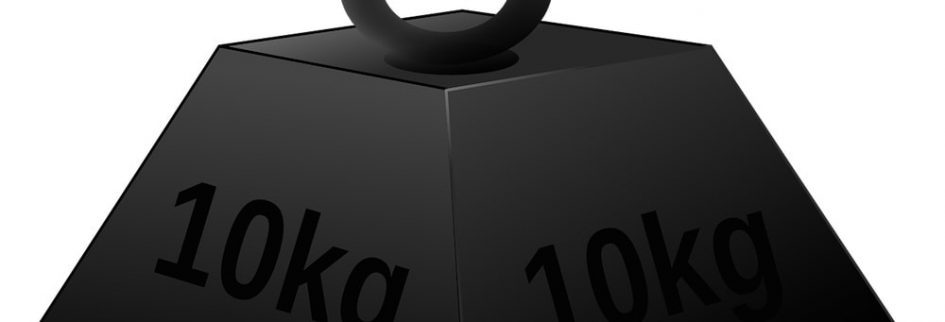It is common for students to mix up the terms mass and weight when studying physics. Mostly it is because people generally have experiences with it before starting to study. We usually talk about how much we weigh or about how much this sack of flour weighs. In both of these cases, what we are actually referring to is the mass, but we don’t talk like that right? It would actually be more accurate to say my mass is 150 lbs or the flour has a mass of 5 lbs. Let’s make a distinction between these two terms, mass and weight, so that we know what is expected when studying the sciences.
Mass is the amount of matter an object has.
It depends of the number of atoms and the size of the atoms in the object. Considering this, the mass of an object doesn’t change whether it is on the Earth, the moon or Saturn for that matter because the number of atoms doesn’t change. The standard unit of mass is the kilograms (kg). This is measured with a beam balance.
Weight is the force exerted on an object due to gravity.
Gravity is a force that changes depending of the size of the objects involved and their location. The force of gravity an object feels on the Earth is different to the force of gravity it feels on the moon. Therefore the weight of an object on the Earth is different to the weight of the object on the moon.
The weight of an object can be calculated by using the formula
$$W = mg$$
where W is the weight measured in Newtons (N), m is the mass measured in kilograms (kg) and g the acceleration due to gravity, a value indicating the force of gravity at a given location. On Earth g = 10 m/s2.
The weight of an object can also be measured using a spring balance. Remember since weight is a force, its unit is Newtons (N).
Remember: The mass of an object is constant anywhere in the universe while the weight is subject to change from place to place due to differences in the acceleration due to gravity (g).
Examples
1. If the mass of a body is 50 kg, its weight is calculated by using W = mg
m = 50 kg
g = 10 m/s2
W = 50 kg x 10 m/s2
W = 500 N
2. If the mass of a body is 100 g, its weight is calculated by using W = mg. Since the mass has to be in kilograms, we must first convert 100 g to kilograms. 100 g = 0.1 kg. (That’s 100 / 1000 g)
m = 0.1 kg
g = 10 m/s2
W = 0.1 kg x 10m/s2
W = 1 N
3. The weight of a mass of stone is 400 N on earth. Calculate its mass.
W = mg
W = 400 N
m = ?
g = 10 m/s2
400 N = m x 10 m/s2
Rearranging the equation to make m the subject gives
m = 40 kg
4. Calculate the weight a 5.0 kg mass would have on the moon. The acceleration due to gravity, g, on the moon, is 1.62 m/s2.
W = mg
m = 5.0 kg
g = 1.62 m/s2
W = 5 kg x 1.62 m/s2
W = 8.1 N ≈ 8 N correct to 1 significant figure
See how the mass of an object is related to density.
Relationship between mass and density
[activecampaign form=1]

Leave a Reply